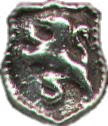This is getting scary. There's only one other review of this film anywhere....and it's Parsons'ses.
Saw this again over the weekend. Why do we insist on watching films on the telly that we already have on DVD? It's bizarre. I kept wanting to rewind the film to catch bits I'd missed. However, I was finally, finally, after
This film should have an acknowledgement in it's credits: This film would not have been made without the kind assistance of George Lucas. Not because ILM were involved in the special effects (although I'm fairly sure they were), but because this film was only made because of the huge reception that Star Wars had received from millions of people who had suddenly discovered they were closet sci-fi fans and didn't even know it! Paramount decided that they needed to get on this sci-fi thing and make a film. Dusting off their archives they discovered a little gem, a little known sci-fi series that had done poorly on initial release but had achieved cult status through syndication.
Then the problems started. First, they couldn't agree on the script. Roddenbury wanted to make his "The
But then the film got started. And was immediately in trouble. It's probably a strange metaphor that the ship gets into trouble as soon as it goes into warp. The film never goes anywhere with it's premise. Fans soon dubbed this "The Motionless Picture."
So what exactly is it about this film that's a problem?
Well, the story of an intelligent probe searching for it's creator had already been done by Star Trek (NOMAD, anyone). However there's only so many stories you can do in sci-fi without repeating yourself. Look at the basic plots of the Bond films.
And there are too many shots of the new Enterprise. These are irritating, but also show you the brand new ship. A lot of people forget this was the first time fans saw the new ship, and it does look good.
Well, the script / acting ain't great.
And a sexy hot female lead, who's bald? Whose idea was that?
No, it was the uniforms. The uniforms were unforgivable. Shades of grey and grey-ish blue pyjamas. Bleugh! They really distract from the action, because everyone looks the same. Absolutely terrible.
Right, time to score it then...
Annoying Goof Count: Two. As usual, they forget that anything spinning clockwise seen from behind will be spinning counter-clockwise when seen from the front. Also goes for reflections.
Score: C+ on the Saxon Film Scale. Good film, could do better.
OQ:
Kirk: Bones, there's a... thing... out there.
McCoy: Why is any object we don't understand always called "a thing"?
Trivia:
Courtesy of IMDB. The story of how this film got to the big screen is almost as interesting as the story itself (some fans say more so). Paramount was already in the advance stages of preparing a new Star Trek series called: Star Trek Phase 2 when Star Wars was released. Wanting to make a film, but not wanting their contracts with the actors to lapse, the studio mounted a campaign of propaganda and misinformation, even asking for script submissions for a show that was never going to be made. A lot of the sets are those for the new series, notably the bridge. In an act of sheer comedy mismanagement Uhura's communications earpieces are the only original props from the original TV series. They were dug out of storage when it was realized someone had forgotten to make new ones for the movie.
However,
Paramount was desperate to either get Nimoy to sign or re-cast his part. The director saved the day. Robert Wise was convinced to accept the position as director by his wife, who was a huge fan of the original Star Trek television series. She convinced him to campaign for Leonard Nimoy's return to the film.
Persis Khambatta became very emotional about having her head shaved for her role. She kept her shorn hair in a box for a time and asked Gene Roddenberry to take out insurance in case her hair didn't grow back. It did.
And if you think the theme sounds familiar, it is. Gene Roddenberry loved the main theme from the score so much, that he reused it for "Star Trek: The Next Generation".
And how versatile is
And speaking of extras:
In the scene where Kirk addresses the crew prior to launching, much of the crew were extras who were noted Star Trek fans, including Bjo Trimble, co-organizer of the letter-writing campaign that kept the original Star Trek alive for a third season. Most of their checks went uncashed; Harve Bennett said that they were probably framed as souvenirs by the fans.
For the DVD release, the producers toyed with the idea of digitally inserting a shot of the NX-01 Enterprise (Jonathan Archer's ship from the prequel series "Enterprise") into the rec room scene where Decker shows Ilia a display of previous ships named Enterprise. The idea was eventually dropped, possibly since the shot would not be able to be seen clearly anyway (the pictures were not easily legible onscreen). The NX-01 would have replaced the shot of the 'ringed' S.S. Enterprise - which eventually appeared on "Enterprise" anyway (in the bar scene in the episode "First Flight").
In the original version of this story, "In Thy Image", Captain Dylan Hunt goes up into space to confront a probe that has been enhanced by an alien civilization. When the probe realizes that Dylan is a member of NASA, the group that created it, it shuts down, having received its answers. This basic premise was retained for the finished film, with the exception that in ST:TMP, Commander Decker merges with V'Ger when he gives the probe the signal, and V'Ger transforms into a higher state rather than shuts down. "Dylan Hunt" never became part of the Star Trek universe, but later got his own as captain of the
